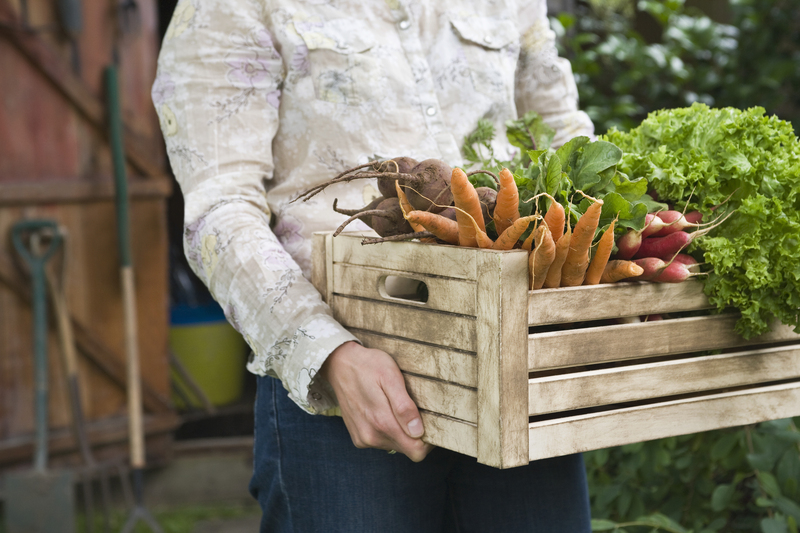Best Blend: Aeration and Overseeding
Posted on 20/09/2025
Best Blend: Aeration and Overseeding
If you own a lawn, you're likely well-aware of the effort it takes to keep it healthy and vibrant. Consistent watering, mowing, and fertilizing are fundamental, but there's more to maintaining a lush green lawn that's not only beautiful but also resilient. Aeration and overseeding stand out as two of the most crucial processes every lawn enthusiast should know about. When combined, they offer a powerhouse of benefits, promoting a greener, fuller, and healthier lawn.
What is Aeration?
Aeration involves perforating the soil with small holes to allow air, water, and nutrients to penetrate grass roots. This process helps the roots grow deeply and produce a stronger, more vigorous lawn. The main reason for aerating is to alleviate soil compaction. Compacted soils have too many solid particles in a certain volume or space, which prevents proper circulation of air, water, and nutrients within the soil. Excess lawn thatch or heavy organic debris buried under the grass surface can also starve the roots from these essential elements.

Benefits of Aeration
The benefits of aeration are numerous. Here are just a few:
- Improved air exchange between the soil and atmosphere: Aeration facilitates this exchange, crucial for healthy lawn growth.
- Enhanced soil water uptake: Aerated soils absorb water more efficiently, reducing runoff and promoting deeper root growth.
- Improved fertilizer uptake and use: Nutrients are more effectively absorbed and utilized when the soil isn't compacted.
- Reduced soil compaction: This allows roots to grow deeper and stronger.
- Enhanced thatch breakdown: Aeration helps to break down thatch faster, which can otherwise prevent grass from accessing vital nutrients.
What is Overseeding?
Overseeding is the process of spreading new grass seed over an existing lawn. It's an easy way to fill in bare spots, improve the density of your lawn, establish improved grass varieties, and enhance your lawn's color. Adding new grass seed helps to ensure that your lawn stays thick and dense, which is essential for preventing weeds and disease.
Benefits of Overseeding
Overseeding comes with multiple advantages. These include:
- Improved lawn density: A denser lawn helps to crowd out weeds and is more visually appealing.
- Enhanced resistance to diseases: Diverse and thick turf can better withstand diseases and pests.
- Better overall color and texture: Introducing new grass varieties can improve the aesthetic quality of your lawn.
- Increased tolerance to changing weather conditions: A mix of grass variants ensures that your lawn can handle different environmental stressors.
Best Time to Aerate and Overseed
Timing is crucial for both aeration and overseeding to maximize their effectiveness. The best time to aerate your lawn is during the growing season, either in early spring or fall, when the grass can best recover and fill in any open areas after soil plugs are removed. For cool-season grasses, like Kentucky bluegrass or fescue, fall is the optimum time for overseeding. For warm-season grasses, such as bermudagrass or zoysiagrass, late spring to early summer is ideal.
Combining Aeration and Overseeding
When done together, aeration and overseeding create a symbiotic effect that amplifies the benefits of each procedure. Aeration opens up the soil, creating an ideal living environment for new grass seeds when overseeding. This combination allows for improved soil-seed contact, leading to better germination and establishment of grass seedlings. Here's a step-by-step guide to doing it right:
1. Prepare Your Lawn
Before you begin aerating and overseeding, ensure that the lawn is mowed to a short height and cleared of debris. This makes it easier for the aerator to penetrate the soil and for the seeds to reach the ground.
2. Aerate the Lawn
Use a core aerator to remove small plugs of soil from your lawn. Make multiple passes to ensure even coverage. The holes created by the aerator will provide the ideal environment for seed germination.
3. Choose the Right Seed
Select a high-quality grass seed that is suitable for your specific climate and lawn conditions. Look for seed blends that are disease-resistant and well-suited for your region.
4. Spread the Seed
Using a broadcast spreader, evenly distribute the grass seed over the aerated lawn. Make sure to follow the recommended seed rate for your chosen variety.
5. Fertilize
Applying a starter fertilizer after overseeding can help nourish the new grass seedlings. Choose a fertilizer with a balanced nutrient ratio to support healthy growth.
6. Watering
Water the lawn thoroughly after overseeding to help the seeds settle into the soil. Keep the soil consistently moist during the germination process, typically for 2-3 weeks, until the new grass is established.
Maintenance After Aeration and Overseeding
Post-aeration and overseeding, proper maintenance are crucial for establishing a healthy, vibrant lawn. Here are essential tips to follow:
1. Watering
Regular and consistent watering is essential for seed germination and root establishment. Water lightly but frequently, keeping the soil consistently moist but not waterlogged. As the new grass begins to establish, gradually reduce the frequency of watering but increase the duration to encourage deeper root growth.
2. Mowing
Once the new grass reaches about 3-4 inches in height, it's time for the first mow. Set your mower to a higher setting to avoid cutting the new grass too short. Regular mowing will help maintain a uniform height and encourage lateral growth.
3. Fertilization
About 4-6 weeks after overseeding, apply a light, balanced fertilizer to support continued growth and development. Regular fertilization throughout the growing season will provide essential nutrients to keep your lawn healthy. Avoid fertilizing too heavily, as this can damage new seedlings.
4. Weed Control
Avoid using herbicides immediately after overseeding, as they can harm the new grass seedlings. Instead, focus on keeping the lawn healthy and dense to naturally suppress weeds. If necessary, treat specific weed areas with spot treatments once the new grass is well-established.
5. Regular Aeration
To maintain the benefits of aeration, consider aerating your lawn once or twice a year, depending on soil compaction and lawn health. Regular aeration will continue to promote root growth, improve soil structure, and enhance nutrient uptake.

Conclusion
Aeration and overseeding are essential practices for achieving and maintaining a lush, healthy lawn. By addressing soil compaction, improving air and water exchange, and introducing new grass varieties, these processes work together to create a resilient and vibrant lawn. Proper timing, combined with meticulous execution and follow-up care, ensures the success of these lawn care practices. Embrace the best blend of aeration and overseeding, and enjoy the benefits of a more robust, beautiful outdoor space.
Further Reading and Resources
For those looking to dive deeper into the world of lawn care, numerous resources are available online, including guides from local agricultural extensions and expert blogs. Remember, every lawn is unique, and understanding your specific soil, climate, and grass type is key to perfecting your lawn care routine.



